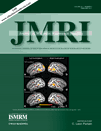Detailed assessment of the hemodynamic response to psychosocial stress using real-time MRI
Abstract
Purpose
To demonstrate that combining the Montreal Imaging Stress Task (MIST) with real-time cardiac magnetic resonance imaging (MRI) allows detailed assessment of the cardiovascular mental stress response.
Materials and Methods
22 healthy volunteers (1:1 M:F, 26–64 years) underwent MRI during rest and the MIST. Real-time spiral phase contrast MR, accelerated with sensitivity encoding (SENSE) was used to assess stroke volume (SV), and radial k-t SENSE was used to assess ventricular volumes. Simultaneous heart rate (HR) and blood pressure (BP) measures allowed calculation of cardiac output (CO), systemic vascular resistance (SVR), and arterial compliance (TAC). Endocrine responses were assessed using salivary cortisol.
Results
In response to stress, BP increased due to increased CO and reduced TAC but not increased SVR, which fell. HR, not SV, determined CO increases. Greater BP responses occurred in men due to greater CO increases and relatively higher SVR. Older participants had greater BP responses due to greater falls in TAC. Greater cortisol response was correlated with greater falls in TAC but resting cortisol and TAC were not related.
Conclusion
This new approach allows detailed, accurate assessment of stress physiology. Preliminary findings suggest stress exposes relationships, not seen at rest, of cardiovascular function with age, sex, and endocrine function. J. Magn. Reson. Imaging 2011;33:448–454. © 2011 Wiley-Liss, Inc.




